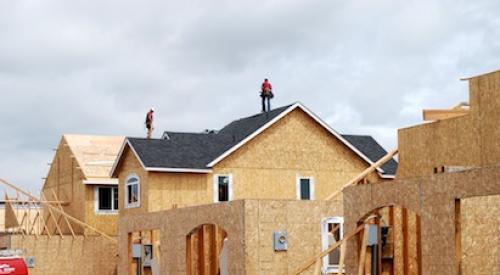| |||||||||||||||||||||||||||||||||||||||||||||||||||||||||
| Historical Data: U.S. Department of Commerce Forecast: Professional Builder | |||||||||||||||||||||||||||||||||||||||||||||||||||||||||
April 2000 total housing starts were at a seasonally-adjusted annualized level of 1.663 million units, after averaging almost 1.8 million units (annualized) during the December 1999-February 2000 period. March’s total (at 1.618 million units) had been the lowest monthly level recorded since June of last year. Still, the dominant single-family-sector continues to perform very well; almost all of the drop-off in starts activity during the past few months has come from the multifamily sub-sector (which had soared to unsustainable levels of activity in January and February).
Overall starts during April of this year were at an annualized level 6.5% better than April of 1999. Although single-family homes were started at a rate 7.8% below the peak level recorded in the final month of last year, they were better than 6% ahead of the level for the same month of 1999. And, despite recent-month losses, total multifamily starts this April were almost 2% ahead of where they stood at year-end 1999 and about 7% above the comparable total for April of last year. Total starts through the first four months of 2000 were estimated at 515,400 units -- a negligible 0.1% drop from the total for January-April 1999.
Although no significant slowdown in housing market activity is apparent in the latest starts report, an analysis of longer-term trends does provide evidence that at least the single-family sector of the market has been affected by higher mortgage rates and greater uncertainty about the future of personal income growth. Homes sales figures -- which cover only the single-family side of the market -- weakened considerably over the first third of this year.
Regionally, two of the four areas of the country recorded declines in starts between March and April of 2000. The starts pace in the Northeast faded 10.1% over the month to its lowest level since October of last year. Overall starts in the South fell 6.2% over the latest two months to their lowest annualized pace since last November -- but still 4.4% ahead of their April 1999 total. April 2000 starts were above their April 1999 comparable totals for all regions of the country, with the West and Midwest regions leading the way.











